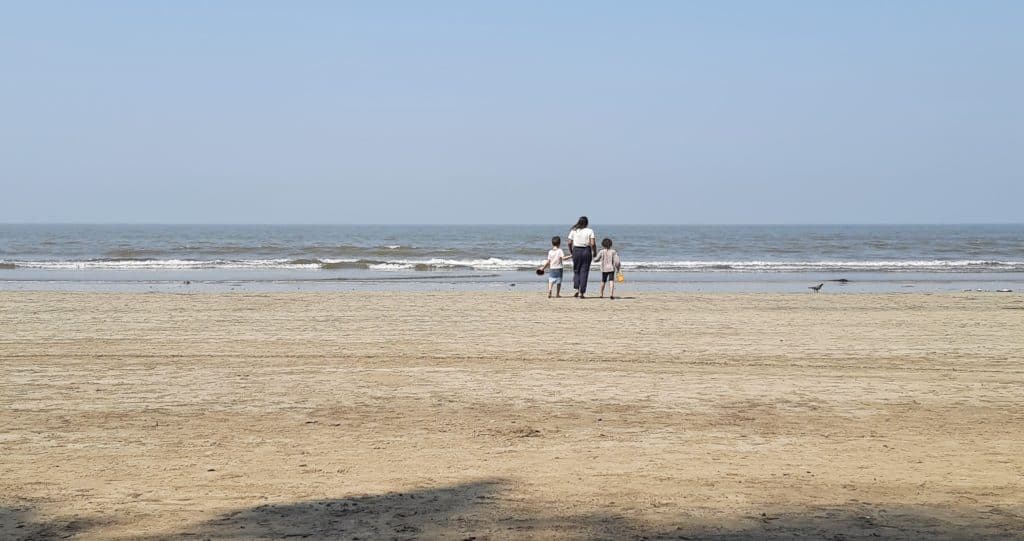In 2020, while most of our population was quarantined in their homes, my family was lucky to live in a society that allowed us free use of the roof terrace for exercise. My husband, daughter and I often enjoyed morning breakfasts up there, and every evening we made it a point to run around, play and exercise. As the first wave waned, slowly, things started opening up. We were overjoyed. We could finally enjoy watching the sun go down the horizon and be in the greenery to ease our anxieties and move our bodies. What became clearer to us was the need for human beings to access open air for their emotional and physical health. Unfortunately, this is routinely ignored by policy makers in Mumbai.
Isolation woes

In a pandemic, the government has the difficult task of curbing the spread of a virus to prevent the health infrastructure from falling apart, while also trying to balance the needs of its citizens. The first lockdown saw urban families in India locked up in their homes, often unable to even go out and see the sun for a minute. These measures were necessary to curb the spread of infection, since there was so much about COVID-19 we didn’t know and had to grapple with.
However, many European countries allowed their citizens one hour of outdoor walks or exercise, recognising the science associated with physical activity during a difficult time. In France, during the first coronavirus lockdown in 2020, citizens were allowed to walk or exercise within a 1 km radius of their house. Germany had similar rules pertaining to outdoor access.
Mumbai is one of the most densely populated cities in the world, with over 22,000 people per sq km, with average residential tenements smaller than most urban areas around the world.
Restricting access to outdoor public spaces increases the density of population in the city by confining people to even smaller spaces, ironically, at a time where physical distancing is paramount.
As the country continued to adjust to changing rules and restrictions in the last two years, public spaces like parks, beaches and promenades of Mumbai were spaces of solace for many, especially children who were away from school and exposure to adequate sunlight. According to a document published by UNICEF, green spaces are necessary for optimal development in children. In a city already scarced in open spaces, this conversation is greatly lacking.
Read more: Mumbai has less green than what masterplan shows: just 1 sq m per person
Responses to closures of public spaces in Mumbai
In the second wave of COVID-19, many parents, children and elderly persons were dismayed by closures of public spaces in Mumbai again. “With parks and the beach closed, it felt like the door to nature had been closed. Especially with a 2 and an 8 year old, it felt like a part of their childhood had been taken away. The freedom to run free and look at the sky above. That bit of childhood.” Shefali Gupta, resident of Juhu, says. At that time, Love your parks Mumbai started a petition to draw the attention of policy makers to research that has proven the significance of outdoor spaces, sunshine and exercise in maintaining one’s health. The evidence is clear, regular physical activity can lower risks of illness substantially, by strengthening immunity.
Public spaces in Mumbai like parks and beaches were closed for 5 months, from April 2021 to September 2021, despite research claiming that outdoor spaces are safer than indoor spaces. Fresh air disperses and dilutes the virus. It also helps evaporate the liquid droplets in which the virus is carried.
Towards the end of 2021, schools were finally going to open for 6 year olds and above. Then, the Omicron variant of the coronavirus emerged, triggering the third wave of the pandemic. We knew schools would shut again. Quickly, official orders limiting the number of people allowed in indoor spaces engulfed different media platforms. But, parks and beaches were allowed to stay open during the day, bringing some relief.
However, in face of rising numbers, the government decided to let all indoor public spaces in Mumbai (restaurants, clubs, malls) function while shutting down open air, free, green public spaces, which were mostly used by children and elders.
Two years into a pandemic, where everyone has grieved a loss, more compassionate and informed guidelines to curb the spread of infection is not untoward to expect. Currently, the parks have been reopened with restricted timings – mornings 5am to 9am and evenings 5pm to 8pm. Beaches and coastal promenades remain closed. A petition by Love Your Parks wants to assert the requirement of access to public spaces at all times. It’s a public health issue.
Do take the time to sign the petition to ensure #SaferOutdoors for you and your children.
